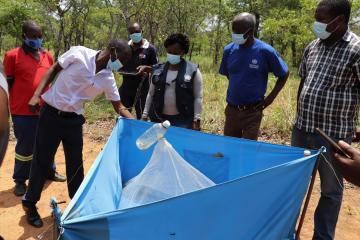A novel scoring system proved accurate for predicting which patients with alcohol-associated hepatitis are at high risk of short-term mortality, according to researchers.
In a derivation cohort, the so-called Mortality Index for Alcohol-Associated Hepatitis (MIAAH) model — which incorporates patients’ age, blood urea nitrogen, albumin, bilirubin, and international normalized ratio (INR) — achieved a C statistic of 0.86 (95% CI 0.82-0.91, P=0.002) for predicting mortality, reported Douglas Simonetto, MD, of the Mayo Clinic in Rochester, Minnesota, and colleagues, writing in Mayo Clinic Proceedings.
In a validation cohort, MIAAH’s accuracy dropped to a still “clinically useful” 0.73 (95% CI 0.65-0.82), showing superiority to the Maddrey Discriminant Function (MDF) model, but not the Model for End-Stage Liver Disease (MELD):
- MDF: C statistic 0.64 (95% CI 0.55-0.74, P=0.01)
- MELD: C statistic 0.72 (95% CI 0.63-0.80, P=0.61)
“Given the significant mortality seen in patients with alcohol-associated hepatitis, assessing disease severity and prognosis is critical,” Simonetto said in a press release. “While we believe the MIAAH will be refined over time, possibly in conjunction with an existing model, our study finds that it’s a useful tool in assessing mortality risk.”
Alcohol-associated hepatitis is associated with high short-term mortality, especially in severe cases where no medical treatments have been shown to lower the risk of death through 90 days. Modeling can help determine liver transplant eligibility and timing, the researchers noted.
“While their tool was an improvement over some existing tools, it was unable to outperform all current tools (though it was not worse than the other scores),” David Victor, III, MD, of Houston Methodist Hospital, told MedPage Today.
“This score, however, is another arrow in the quiver of the doctor trying to stratify patients with alcohol associated liver disease,” added Victor, who was not involved in this study.
For their derivation cohort, Simonetto’s group examined health record data on 266 patients with alcohol-associated hepatitis (by National Institute on Alcohol Abuse and Alcoholism criteria) treated at the Mayo Clinic from 1998 to 2018. Patients had an average age of 48 years, nearly all were white, 38% were women, and the mean body mass index was 29.2.
Here, 30-day mortality was 19.2%, and multivariate analysis showed the following variables to be significantly associated with mortality:
- INR, per 1 unit: OR 2.80 (95% CI 1.51-5.21)
- Age, per 10 years: OR 1.82 (95% CI 1.26-2.64)
- Bilirubin, per 1 mg/dL: OR 1.04 (95% CI 1.01-1.08)
- Blood urea nitrogen, per 1 mg/dL: OR 1.02 (95% CI 1.01-1.04)
- Albumin, per 0.1 g/dL: OR 0.91 (95% CI 0.85-0.98)
For the validation cohort, the group looked at 249 patients treated at the University of South Dakota and University of Kansas healthcare centers from 2009 to 2018. The 30-day mortality among this group was 12.9%, and two patients underwent liver transplants at this time point. After adjusting for age, no significant differences in 30-day mortality were observed between groups.
The two cohorts — derivation and validation, respectively — had similar MELD scores (18.5 vs 19.3) and levels of bilirubin (15.4 vs 13.7 mg/dL), albumin (2.9 vs 2.8 g/dL), creatinine (1.5 vs 1.4 mg/dL), and blood urea nitrogen (21.9 vs 19.6 mg/dL).
The derivation cohort had significantly lower median MDF scores (44.5 vs 59.0), INR values (1.8 vs 2.1), and fewer patients on corticosteroids (21.4% vs 29.7%; P
Study co-author Camille Kezer, MD, also of the Mayo Clinic, noted that the MIAAH model “has the advantage of performing well in patients, regardless of whether they’ve been treated with steroids.”
The authors acknowledged several limitations to the data, including the use of INR, since it’s calibrated for those on vitamin K antagonists. Using creatinine as a functional renal marker can also have drawbacks. Finally, dynamic assessments of bilirubin levels were not performed.
![author['full_name']](data:image/png;base64,R0lGODlhAQABAAD/ACwAAAAAAQABAAACADs=)
Zaina Hamza is a staff writer for MedPage Today, covering Gastroenterology and Infectious disease. She is based in Chicago.
Disclosures
Simonetto and coauthors reported no conflicts of interest.
Note: This article have been indexed to our site. We do not claim legitimacy, ownership or copyright of any of the content above. To see the article at original source Click Here



![author['full_name']](https://indexofnews.com/wp-content/uploads/sites/2/2022/03/localimages/Zaina_188.jpg)










